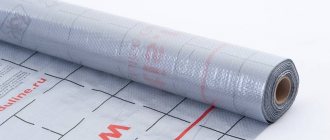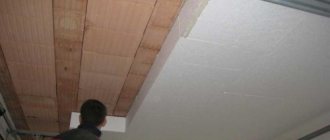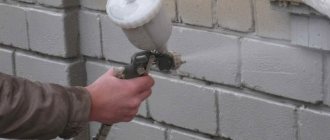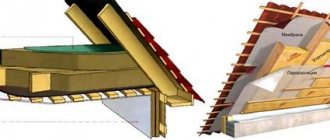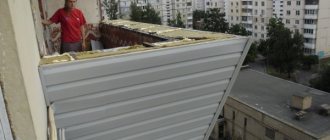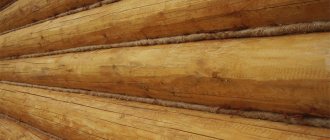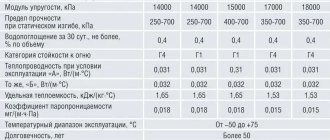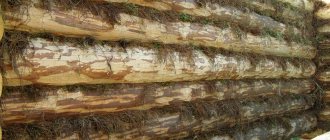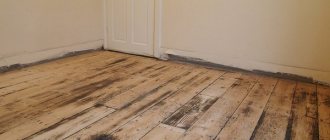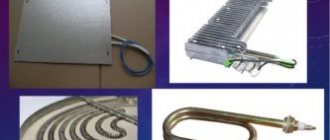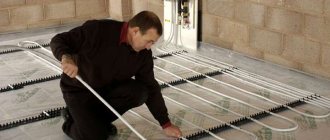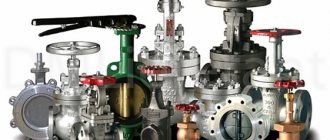One of the latest technologies that has become widely used is liquid foam plastic (penoizol). Due to its high thermal conductivity and durability, it is used for insulating buildings or producing cladding materials such as sandwich panels. First of all, the ability of this substance to fill even minor cracks is noted, although other advantages are no less significant, which makes it quite in demand when performing construction work.
What is liquid foam?
Penoizol refers to heat-insulating substances that form a quick-hardening liquid foam and do not have large cells. It is presented in several varieties, differing in composition. There is a type based on urea resins, as well as one-component polyurethane foam, packaged in cylinders. However, in both cases they differ in similar operating properties and have advantages regarding thermal insulation, ignition, density, efficiency and handling.
Liquid foam has a rare consistency, allowing it to penetrate into the most inaccessible places; it quickly increases in size and hardens, filling empty spaces. These properties are provided by specially selected components:
- warm water at 40 degrees;
- foaming agent;
- catalyst that promotes hardening;
- urea-formaldehyde resin.
By the way, liquid foam does not require high temperature to harden. It may also be low. Which is very convenient when using the substance.
Where can we use penoizol in cylinders?
Liquid foam plastic has found its application almost everywhere where insulation needs to be carried out, and therefore in the construction industry and during repair work. Using this new generation material, it is possible to provide thermal insulation for absolutely all structures, regardless of their purpose (residential or industrial). It does not matter what exactly will be insulated, the facade of the building or its roof, foundation, attic, and maybe even the walls of the basement.
Moreover, thanks to the convenient form of release, insulation of the floors and walls of houses with liquid foam plastic is accessible even to inexperienced builders; it will not be difficult to insulate even a pipeline or other industrial equipment. This building material is in great demand not only due to its thermal insulation characteristics, which are better than the properties of the sheet form, but also because of other positive nuances. For large-scale tasks, you will have to rent or purchase special equipment, but for small-scale work, a very convenient form of release - cylinders - is suitable.
Production and release forms
- Mobile stations. To make polystyrene foam, special devices are used, the cost of which is quite high - up to 2.5 thousand dollars. However, the unit is so simple that you can equip it yourself. The operating principle is simple. Using a hydraulic pump, raw materials and catalyst are supplied to a unit with compressed air, where they are converted into liquid foam. Then, through a hose, using a certain pressure, they are supplied to the place that is to be treated. All parts of such an installation can be freely purchased, and the assembly drawing can be viewed on the Internet.
- Liquid foam in cylinders . Often used in large-scale construction. The cylinders are reusable and rechargeable. The kit includes two cylinders, one of which contains a special mixture of paste-like consistency, the second contains a catalyst. When mixed, they form an insulating substance in the form of liquid foam. This type of balloon insulation is also used for large-scale work.
- Household foam. The easiest variety to produce. It is intended for household needs.
Mobile station
Liquid foam in a container
Balloon packaging of liquid foam is considered the most convenient. It has a longer service life, is resistant to fire and environmental influences, and is not damaged by rodents.
It is not difficult to buy such polystyrene foam, since the price is quite reasonable. The cost of one household cylinder with a dispenser is on average 500 rubles. It is enough to process 6-10 square meters. m of surface.
Characteristics, properties and scope of application
To determine the harm of polystyrene foam as insulation, it is necessary to consider its properties, composition and manufacturing method.
Special attention should be paid to the area of application, since it is the decisive factor in identifying the impact on humans
Structure of the material on a cut
Insulation
Foam plastic is almost irreplaceable as a material for protection against cold.
- Its porous structure can significantly reduce thermal conductivity.
- The polystyrene foam holds its shape perfectly, something that not one of the insulation materials in this price category can boast of.
- It is more than 90% air, so it does not burn and does not support this process.
- In its production, a minimum amount of styrene-containing substances is used, which is considered a decisive factor in determining environmental cleanliness.
- The maximum service life of foam plastic exceeds 50 years. This is evidenced by the installation instructions and the quality certificate included with most products made from this material.
Use as external insulation of houses, amateur photo
Release of toxic substances
It is believed that polystyrene foam, when burned or subjected to strong heating, releases styrene, which is very harmful to the body and in its pure form can become a real poison. However, the harmfulness of basalt insulation is sometimes much higher, especially if violations were made during its manufacturing process, which leads to the decision to use a less dangerous material, although it emits unnecessary substances.
The use of this material was approved back in the Soviet Union, taking into account the relevant GOST
Thus, it becomes clear that it is quite safe to insulate a loggia or other premises using polystyrene foam. In the same cases where it will emit harmful substances, there are many other materials, in the form of vinyl wallpaper and plastic interior items, that can cause more harm.
Rodents really like this material. What may indicate lack of toxicity
Application area
When determining the degree of harmfulness of a given material, it is necessary to consider the places where it is used.
First of all, it is worth understanding that polystyrene foam is used indoors only when insulating plastic windows or entrance doors. In all other cases, cheaper materials are used. Therefore, its impact on humans is minimal. Separately, it is worth noting the insulation of walls in contact with the street. The fact is that it must be done only from the outside (see also the article Insulating facades with foam plastic: we do external thermal insulation with minimal time and money)
Otherwise, condensation will appear between the insulation and the wall, mold and mildew will form. When plasterboard partitions are erected, it does not matter at all whether the basalt insulation is harmful or whether styrene foam releases. In this case, both of these materials are placed in such conditions that their use is not only the most optimal solution, but also environmentally friendly. The only unsafe place to use this insulation is considered to be a metal roof. However, taking into account the fact that foam plastic is separated from the immediate area of incandescence by a layer of waterproofing, and from the living space by a vapor barrier film, then using it for these purposes is quite acceptable.
However, taking into account the fact that foam plastic is separated from the immediate area of incandescence by a layer of waterproofing, and from the living space by a vapor barrier film, then using it for these purposes is quite acceptable.
Houses in Japan made entirely of foam plastic
Research and practice
Many novice craftsmen, doing installation work with their own hands, turn to specialists or the Internet for advice. However, there is no clear opinion from experts or reliable research from specialists on the issue of the dangers of this material.
Response from the Ministry of Emergency Situations to a request about the dangers of this material and its fire safety during the construction of residential buildings
At the same time, practice has shown that the location of the insulation and external influences on it cannot completely eliminate the release of harmful substances. True, the probability of such cases is so small and requires certain conditions that it is not worth taking it seriously.
It is also necessary to remember that the price of other environmentally friendly insulation materials is very high, and their natural components also emit harmful substances when burned or overheated.
Thickness of different types of material to achieve the same thermal insulation effect
Specifications
The main technical parameters of polystyrene foam are characterized by the following indicators:
- density - up to 25 kg/m3;
- operating temperature range - from -50 to +1200С;
- thermal conductivity coefficient - in the range of 0.012-0.047 W/m·K;
- water absorption by volume - up to 20%;
- flammability group - G2 (materials that do not support combustion and self-extinguish);
- vapor permeability - 0.23 mg/(m/h/Pa);
- technological shrinkage (depending on density) - up to 5%;
- service life up to 50 years.
In terms of sound and thermal insulation properties, liquid polystyrene foam is superior to insulation materials made from polystyrene foam and mineral wool.
Penoizol adheres well to almost all building materials and perfectly fills voids. It usually hardens within 20 minutes after application, and the next stage of work can be carried out after 2 hours.
Liquid thermal insulation: application
In this article we will not tell you what good and effective liquid thermal insulation is for walls; on the contrary, we will debunk myths. This insulation, if you can call it that, is only suitable for pipes. Walls, floors, facades can only be painted with it, but not insulated in any way. Are a few millimeters of this nano-new product replaced by 50 mm of foam? No matter how it is, this is impossible, at least with today’s level of technology. This is, at a minimum, a substitution of concepts, and if without banknotes, it is an ordinary deception for the purpose of profit. Alas, these are the realities, everything needs an eye and an eye. Interesting article: Penoizol insulation: application, reviews.
Advantages and disadvantages of the material
Liquid foam plastic is a fairly popular insulation material in the construction of private houses and industrial-type buildings, due to its many advantages:
- fine-mesh structure - allows air to pass through well, so condensation does not form, the walls are not affected by mold or mildew;
- fire resistance - hardened penoizol does not burn, but simply smolders without releasing any harmful products;
- resistance to changes in temperature and humidity - hardened penoizol is not affected by any temperature changes, therefore it retains its properties from 50 to 80 years;
- noise insulation - a 5-7 cm ball of foam creates a reliable noise barrier;
- Possibility of use in hard-to-reach places.
Despite many positive reviews about penoizol, it also has some disadvantages that you should be aware of:
- polystyrene foam has reduced mechanical strength;
- absorbs moisture well, so it deteriorates its quality;
- has an unpleasant odor of formaldehyde, although it gradually weakens and disappears after the substance hardens;
- allows a one percent shrinkage of the insulating layer in frame walls, which occurs after it hardens.
Inappropriate use of liquid thermal insulation
Conclusion of NIIMosstroy based on the results of a study of liquid ceramic coating Korund.
One of the favorite trump cards of sellers is the supposed possibility of using liquid thermal insulation for walls from the inside. At the same time, it is like a panacea against mold. Well, it’s very convenient: take a brush, apply paint in the corners in several layers and that’s it, you can forget about mold, and the house becomes so warm that it’s even hot. We don't want to upset you, but this is not true:
- you need to insulate from the outside, from the inside only as a last resort;
- We have already talked about thermal conductivity, no comments here, there is absolutely no effect;
- does the mold disappear? No matter how it is, she is simply not visible.
Calculated thermal readings of Thermo-Shield.
This heat-insulating paint does not allow moisture to pass through, which condenses at the dew point - this is between the wall and the mastic. Mold lives there and thrives, but you don’t know about it at all - blessed is the one who doesn’t know. In particularly clinical cases, liquid floor insulation is used. As paint it’s great, but as insulation it doesn’t work.
What can we say when the insulation of facades with liquid thermal insulation is presented as a solution to the issue of heat loss once and for all. People believe it, dump the whole house, pay the same amount for heating after the work is done, and go to court in the spring. They have been suing there for years and to no avail, and the money has already been spent, and not a small one. Consumption per meter is 0.5 liters (one layer 0.4 mm). There should be at least 8 layers, which means 4 liters per square meter at a price of 300 rubles per liter. Total 1200 rubles per square meter. For comparison, a cubic meter of polystyrene foam is 50 mm with a density of 25 kg/m. a cube costs 3,500 rubles. A square meter will cost 175 rubles, even with glue and finishing it will be 350 rubles, but not 1200.
A metal pipe for a stainless steel gas boiler chimney must be insulated, unless we are talking about coaxial chimneys. Thermal insulation is only needed in areas that are located in unheated rooms and outdoors.
Here you can read the instructions on how to make a chimney for a gas boiler with your own hands.
Insulation with liquid foam plastic
Penoizol is widely used when insulation measures are required for houses and other objects. They can be used to treat walls, roofs, and floors.
Walls
Walls in houses are insulated in three ways:
during the process of building a house, they fill the gaps between the walls layer by layer;- in a finished house, they heat-insulate walls that have at least a 3-5-centimeter space behind them: drill holes in a checkerboard pattern at a meter distance, then pour penoizol into them;
- when there is no space behind the wall, a false wall made of plasterboard or plastic is used.
The insulation is applied vertically, so it is advisable to clean the surface before doing this and then wet it so that the substance adheres more firmly to the surface. When you have to work in cold weather, there is no need to wet the wall. Then it’s better to warm up the foam cylinders. A bucket of warm water is suitable for this. They should not be heated too much, as the container may explode if overheated.
Before use, you need to shake the container, after which you can use it. The supply of the substance is regulated by a special dosing screw. When attaching the cylinder to the mounting gun, keep the container upside down. If breaks are required between work, there is no need to detach the cylinder. You just need to clean the gun nozzle.
The ability of penoizol to penetrate into all cracks and voids allows you to save time and efficiently insulate the facade of a house or cottage at minimal cost. For example, to process a building of 100 square meters. m can be spent only 3-4 hours - significantly less than when working with other insulation materials.
How many cans of foam will be needed for insulation can be calculated by knowing the total area of the house, as well as the thickness of the void to be filled.
Do you use liquid foam to insulate walls and roofs?
Yes
No
Plates
However, penoizol is used not only for thermal insulation of walls. It also does an excellent job as an adhesive for slabs intended for insulation.
The work is performed in the following sequence. First, the surface is cleaned, and the slab is also inspected for errors (defects, contaminants) and, if necessary, they must be eliminated. Then you need to moisten the area where the adhesive will be applied with water. And this is done in two ways:
- distribution of foam mass over the surface;
- applying liquid foam around the perimeter and diagonal of the slab.
Both options are used. True, the second one does not provide such high-quality grip; it makes it possible to save on foam insulation.
Next, the prepared slab must be immediately pressed well against the wall. As you continue your work, you must not forget about the need to apply foam to the joints between the slabs. This technique will allow them to be firmly fixed.
Wall insulation work is best done when there is no frost.
Roof
Penoizol is considered a fast, high-quality and inexpensive roof insulator. This is one of the most popular insulation methods used for pitched and flat roofs. Foam is also used to insulate attic floors. Its best advantages are revealed on the roof: it does not weigh down the structure, does not rot and is not destroyed by microorganisms. Moreover, it is durable and easy to use. Even inexperienced builders can build a roof of 150 square meters. m insulated with penoizol in three hours.
Material preparation technology
Liquid foam is prepared immediately before its use. But this will require special installations, since nothing can be prepared manually. This is a special ejector and foam generating unit. The main component is a resin-glue, which, when interacting with a hardener under temperature, turns into plastic.
For all this you will definitely need a foaming agent and definitely water. The previously prepared solution is fed into the foam generator for foaming and after that the foam should harden for the first time within 20 minutes. Complete hardening and drying occurs in approximately 3-4 hours. Externally, the result is a porous surface that does not allow liquid to pass through.
Many argue that liquid insulation absorbs a lot of moisture and cannot be used as an external cladding material for private houses or large public buildings. But this is absolutely not true, because its basis is precisely intended for such use. Moreover, during testing and inspection of this material, it was found that when exposed to strong moisture and even basic contact with water, the humidity of the liquid foam itself does not exceed 2%.
This indicator does not change no matter the weather. Even if it is not possible to order installation of insulation, such devices for preparing the solution can be easily purchased in a store or simply rented.
If this is a private house of normal size or even a two-story one, then small installations will do. The insulation process will not take much time if you have all the necessary components and all the building materials.
Do-it-yourself insulation
To make high-quality thermal insulation of a house with foam, while ensuring the safety of the wall material with a guarantee, only a real professional team can do. For those who decide to perform the procedure themselves, we can recommend the following instructions:
- The sheathing is screwed or nailed to the outer sides of the house wall. The slats, 2-3 cm thick and 7-10 cm high, are mounted edge-to-plane. Horizontal and vertical crossbars should form hollow cells with dimensions of 0.5 by 0.5 meters.
- Before starting work, the user puts on a protective suit, gloves, goggles, and a respirator.
Insulation of walls with polyurethane foamSource stroy-podskazka.ru
- The spraying equipment is brought into readiness, the container is filled (foam for wall insulation in cylinders is connected to the gun), its serviceability and performance are checked.
- The cavities of the sheathing are filled from edge to center with foam, taking into account its subsequent expansion - in full accordance with the instructions from the manufacturer.
- Upon completion of the work, the material is given time to completely harden.
- The frozen mass is leveled and finished with panels, sheet materials or plaster.
Video on how to insulate a frame house using polyurethane foam:
What is penoizol?
The material is a modified foam. While studying penoizol - what it is, we note that its consistency is similar to marshmallow. In its hardened form, a modern thermal insulator for insulation is a foamed plastic with a cellular structure. This material is prepared directly on the construction site. Using special equipment, the liquid mixture fills all existing voids. This helps save money, time and effort. In addition, the storage space required is minimal.
Composition of penoizol
During the manufacture of this material, inexpensive components are used, making it affordable. Production requires the use of the following components:
- urea-formaldehyde resin;
- foaming component;
- orthophosphoric acid;
- water.
All this is put into a foam generator, to which compressed air is supplied. This device forms a foamy mass with which the voids are sealed. Modified mettemplast is a white substance with a jelly structure. Hardening of the applied composition occurs after 10 minutes, after 4 hours the mass becomes solid. Final strength occurs after three days.
Characteristics of penoizol
This insulation is characterized by the following qualities:
- Ability to conduct heat
. Polymer foam has a coefficient from 0.031 to 0.041 W/m²K. The layer can be from 5 cm to 1 m. - Fire resistance
. The material has a flammability group of G-1, and a flammability group of B-2. This means that penoizol not only does not burn, but also does not melt. The insulation can be used in the following temperature range: from -60˚ to +80˚С. - Chemical and biological resistance
. Penoizol is not afraid of fungus and other biological microorganisms. In addition, the material does not react to aggressive chemical environments and organic solvents. - Moisture resistance and breathability
. Moisture is absorbed and released without consequences. After drying, the quality is not lost. The hygroscopicity of the material helps it “breathe”. - Strength and durability
. The soft structure makes the insulation adaptable and helps it adhere well to the surface, filling all corners. High bending strength. Operational life - 30 years.
Pros and cons of penoizol
Liquid foam has many advantages that set it apart from other types of thermal insulators. The advantages of the material include:
- low thermal conductivity coefficient;
- elasticity and resilience;
- resistance to mechanical stress;
- resistance to sudden temperature changes;
- high level of steam permeability;
- good adhesion;
- protection against mold and mildew;
- durability;
- environmental friendliness;
- affordability.
Before making a final decision on the material, you need to consider all the pros and cons of penoizol. The disadvantages of the material include:
- material shrinkage by 5%;
- inability to work at temperatures below +5˚С;
- low tensile strength;
- risks of releasing hazardous vapors during installation;
- impossibility of preparation and application without equipment.
What is better penoizol or polyurethane foam?
These materials are often compared with each other in terms of financial benefits and technical characteristics. The following indicators can be used:
- The first place when choosing is safety of use. Insulating houses with penoizol, while manufacturers claim that their material is harmless, is strictly prohibited in some European countries, as well as in Canada and America, because it is considered a source of formaldehyde. Here the question arises: is penoizol harmful? This cannot be said definitely, because the quantity of high-quality material is minimal. Polyurethane foam is neutral in this matter.
- The water absorption of the second material is negligible, due to the closed porous structure. Penoizol may have excess moisture, which will subsequently lead to its destruction. In this case, it will be necessary to install moisture insulation.
- In terms of strength, penoizol is also slightly inferior to polyurethane foam.
- Urea-formaldehyde foam costs less than the second material.
What is better penoizol or ecowool?
In this case, the answer is obvious, because although there are a large number of seamless materials, only one has a natural organic base. We are talking about ecowool, because other than it, no other material has such a unique opportunity as being identical in nature to wood. When choosing penoizol or ecowool, you need to think about the safety of the people who will live in the room. When applying the first material, formaldehydes are released, even in small quantities, but they are present. In the case of ecowool, nothing like this is observed.
In addition, the following comparison can be made:
- The thermal conductivity of the materials is almost the same.
- The mass of penoizol is significantly less than that of ecowool. This allows it to be used for lightweight structures.
- The installation is also the same - spraying followed by distribution.
